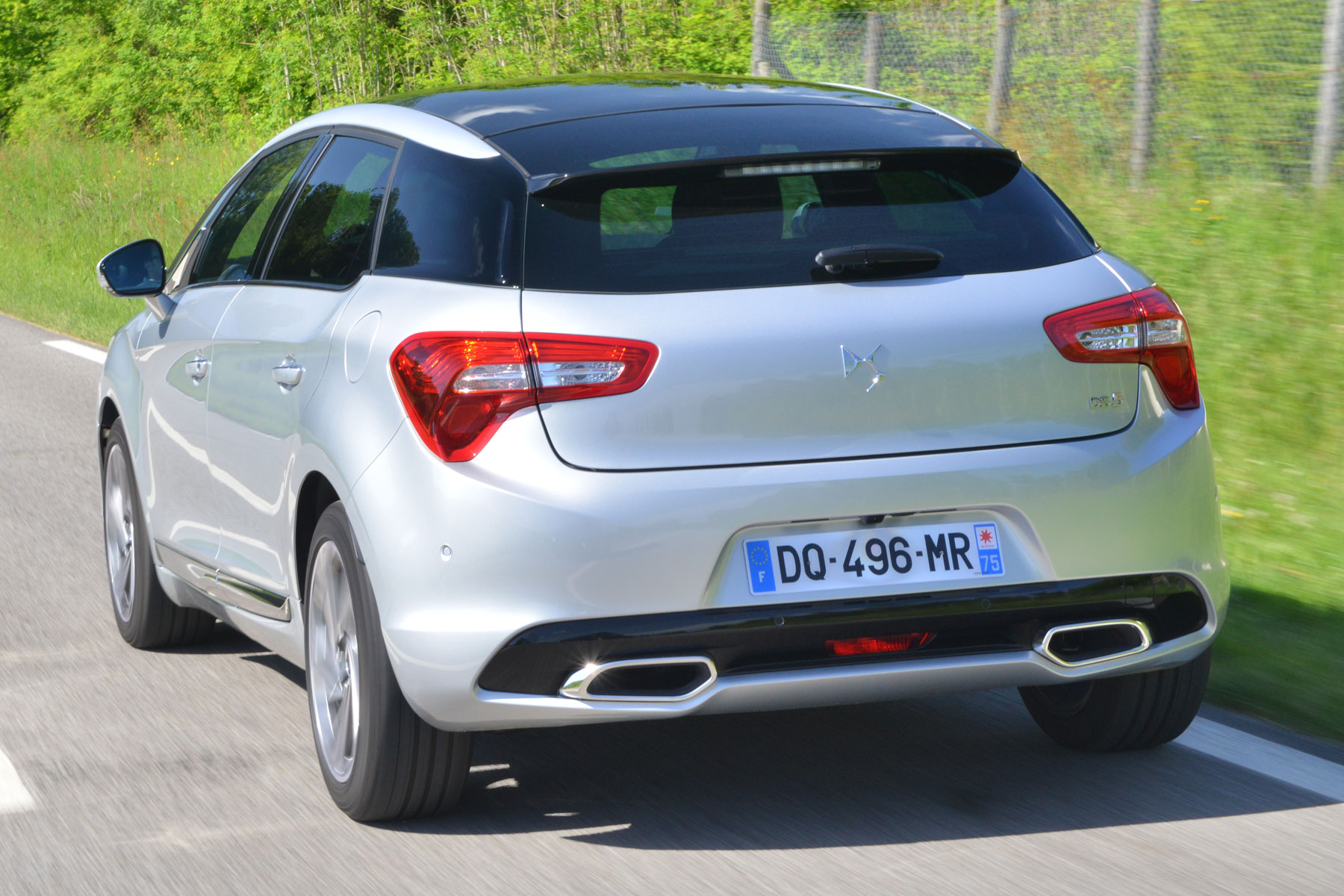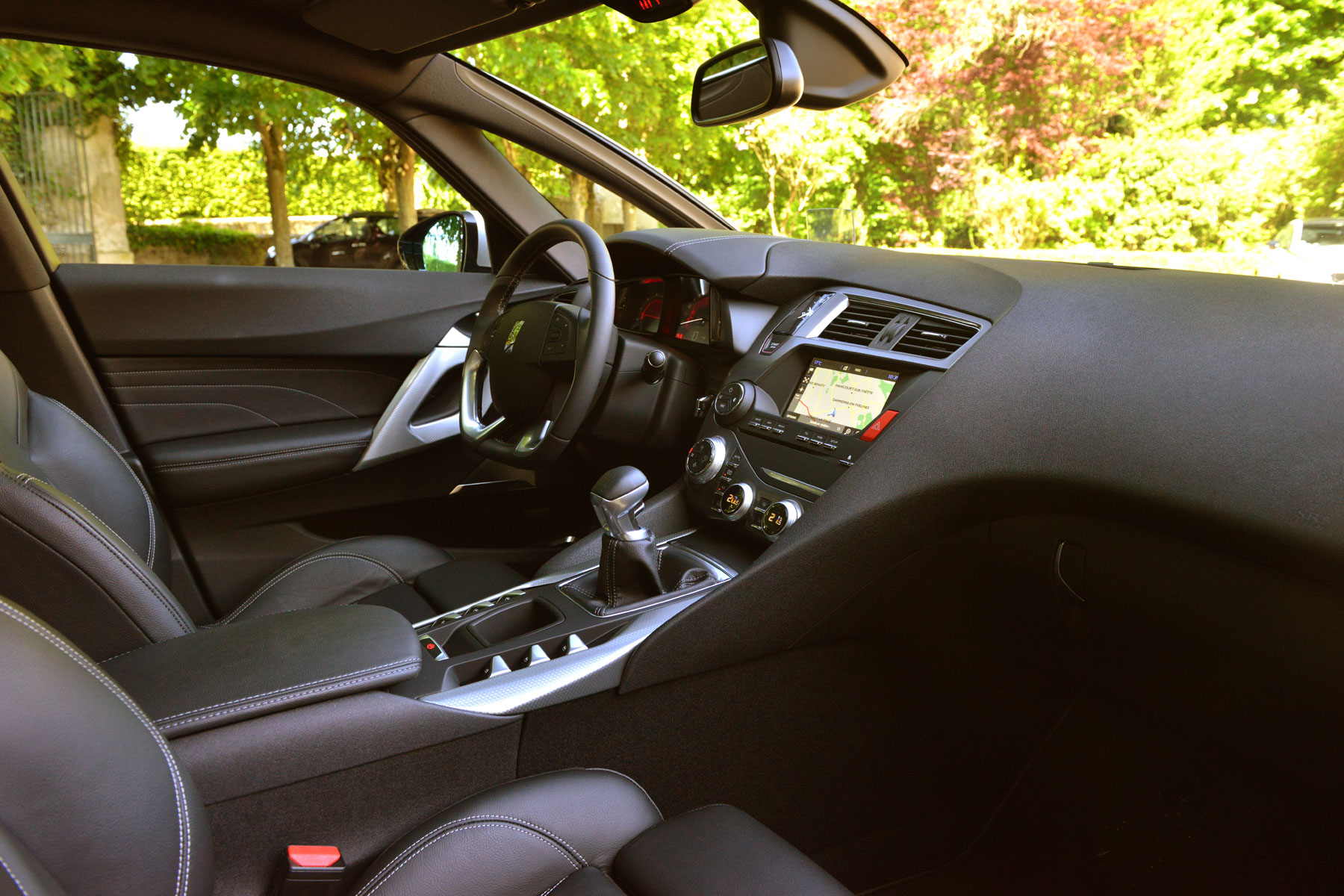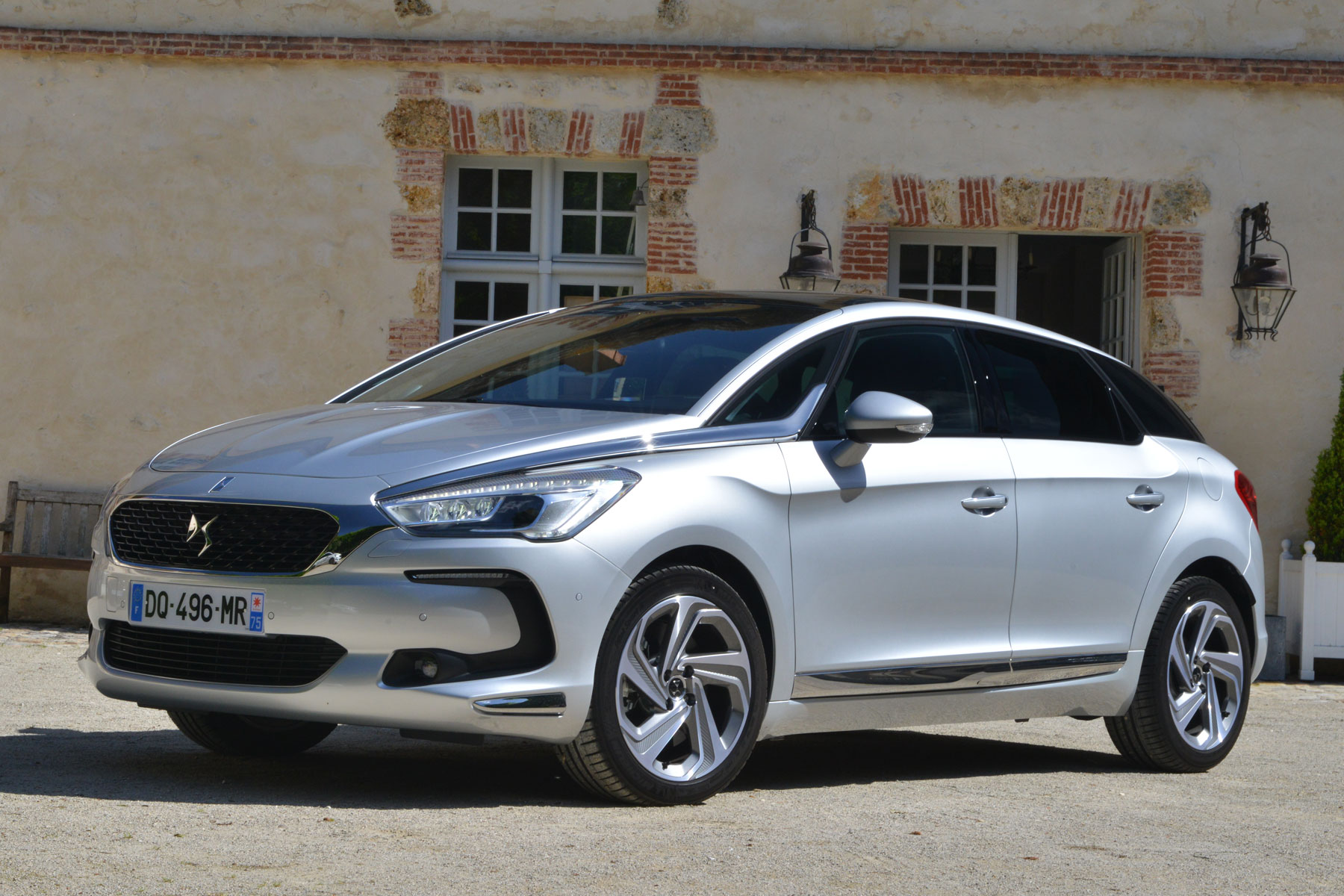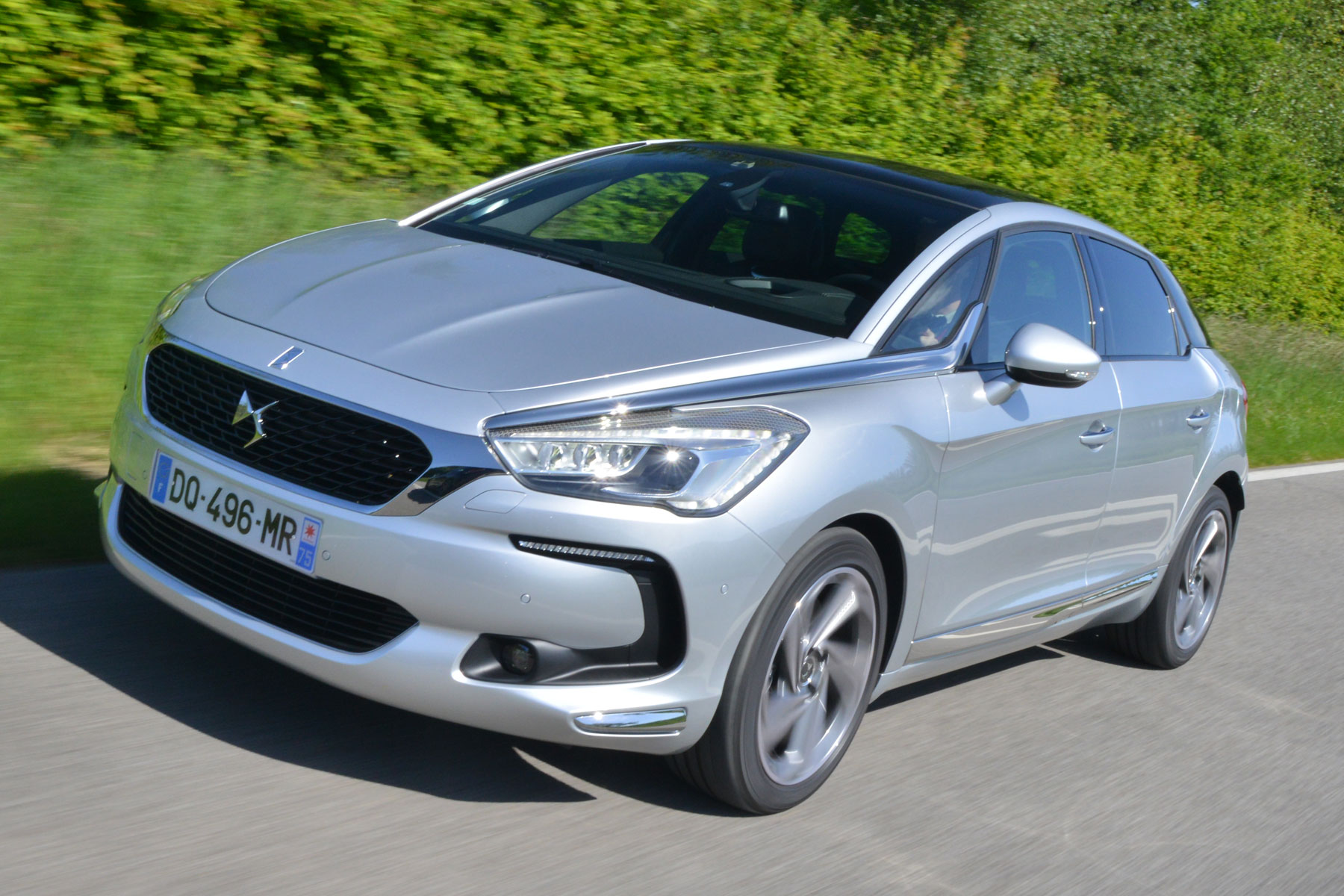Revised DS 5 rides better than before, while showing the world how to do luxury interiors. But it’s no longer a Citroen.
Andrew Brady | May 2015
As you may have heard, Citroen is going upmarket with its new DS brand. That means all of its range sporting the DS badge – DS3, DS4 and DS5 – will soon be sold without Citroen chevrons to be found anywhere. Think Toyota and Lexus, Nissan and Infiniti, and you get the idea.
So what has DS Automobiles done to introduce itself as a brand and get tongues wagging? Launched an exciting new hybrid SUV? No. Replaced the brilliant DS3 supermini with something even more desirable? Nope.
It’s given the slow-selling DS 5 (note – new space, it’s no longer the DS5) a bit of a facelift. Erm…
What’s the DS 5 like to drive?

OK, maybe we’re being a bit sceptical. The DS 5 was already a good car, and it’s now much better to drive.
The improvement is largely down to new preloaded valve technology in the dampers, limiting sudden changes in damping force. This means harsh bumps from potholes and changes in road surface are softened, rather than being passed onto passengers.
In simple terms: the DS 5 now has the ride quality you’d expect from a big, executive French car. And that’s the biggest thing that was holding it back before.
Engine-wise, buyers get a choice of 165hp and 210hp petrol units, a diesel (with 120hp, 150hp or 180hp) and a hybrid.
On the DS 5’s launch in Paris, we tried the 150hp diesel, which is expected to be the biggest seller in the UK. It’s a sprightly, torquey diesel which leaves you wondering why you’d bother shelling out for the more powerful 180hp.
The six-speed manual gearbox is pleasant enough, with a short throw, while the six-speed auto partnered with the petrol is a big improvement over the robotised manual of its predecessor.
When it comes to handling, the DS 5 isn’t as entertaining as a BMW 5 Series when the going gets twisty, but that’s not what this car is about. It’s safe and controlled, with little body roll, and the steering provides enough feedback to tell you when sir is getting a little carried away.
Despite the DS 5’s chunky dimensions it’s a fairly easy car to maneuver – helped by a host of technology, including (for the first time) a new blind-spot monitoring system. This is a useful tool as, despite its seemingly endless windows, there does seem to be a number of chunky blindspots in the DS 5.
Is the DS 5 a genuine BMW 3 Series rival?

What the DS 5 excels at is feeling properly premium. This doesn’t feel like a car that’s been designed by accountants. Every little details is well-made and has been given a lot of thought.
One in five buyers of the current model opt for the ‘watchstrap’ leather seats of our test cars – as well as being good quality leather, they look the part, while feeling comfortable. The price? That’ll be £1,390 on the Prestige. £2,690 on the Elegance. Gulp.
Still, you get what you pay for. Everything you touch in the DS 5 feels upmarket. So many manufacturers are satisfied by a bit of flimsy plastic for things like the cubby box handle, that it’s a nice surprise when a carmaker has invested some time and money into giving some minor details such thought.
The technology is equally luxurious. Ambient lighting and a quality sound system are further minor touches to show where you’re money’s gone. A new seven-inch touchscreen infotainment system with sat-nav is standard on all models, and easy to operate. It’s also decluttered the dash, which now sports 12 fewer buttons than its predecessor.
Not only can mainstream brands such as Ford learn a lot from DS when it comes to make a car feel premium (ahem… Vignale). Even German brands, while exuding quality, don’t feel quite as special inside.
Verdict: DS 5 (2015)

It’s a bold move buying a new DS 5. The manufacturer admits that it’ll take about 15 years to truly establish itself as a premium player. For the time being, it lacks the brand image most people would want if they were to spend around £30,000 on a car.
Even if you’re not so bothered about the badge yourself, the vast majority of people are, meaning poor residual values could make the DS 5 hard to justify on paper.
If you can, or you’re reading this a few years down the line and looking at one as a secondhand purchase, we salute you for daring to be different. Numbers and badge snobbery aside, the DS 5 feels totally luxurious, and will stand out in a sea of bland, German saloons. For that, we like it a lot.
Rivals: DS 5
- Audi A4
- BMW 3 Series
- Lexus IS 300h
- Skoda Superb
- Volkswagen Passat
On paper, the Audi A4 and BMW 3 Series make a lot more sense than the DS 5. They’re dynamically stronger, too, the BMW in particular. But while they’re well-made, they lack that pizzazz of the DS. The Lexus is a strong rival to the hybrid DS 5, while the Skoda Superb and Volkswagen Passat have both been replaced recently and are now very strong contenders in this class.
Specification: DS 5
Engine 1.6-2.0-litre diesel, 1.6-litre petrol, hybrid
Gearbox 6-speed auto, 6-speed manual, CVT
Power 120 – 200hp
Torque 177lb/ft – 295lb/ft
0-62mph 9.3 – 12.7 seconds
Top speed 119 – 137mph
MPG 47.9 – 72.4
CO2 103 – 136g/km
